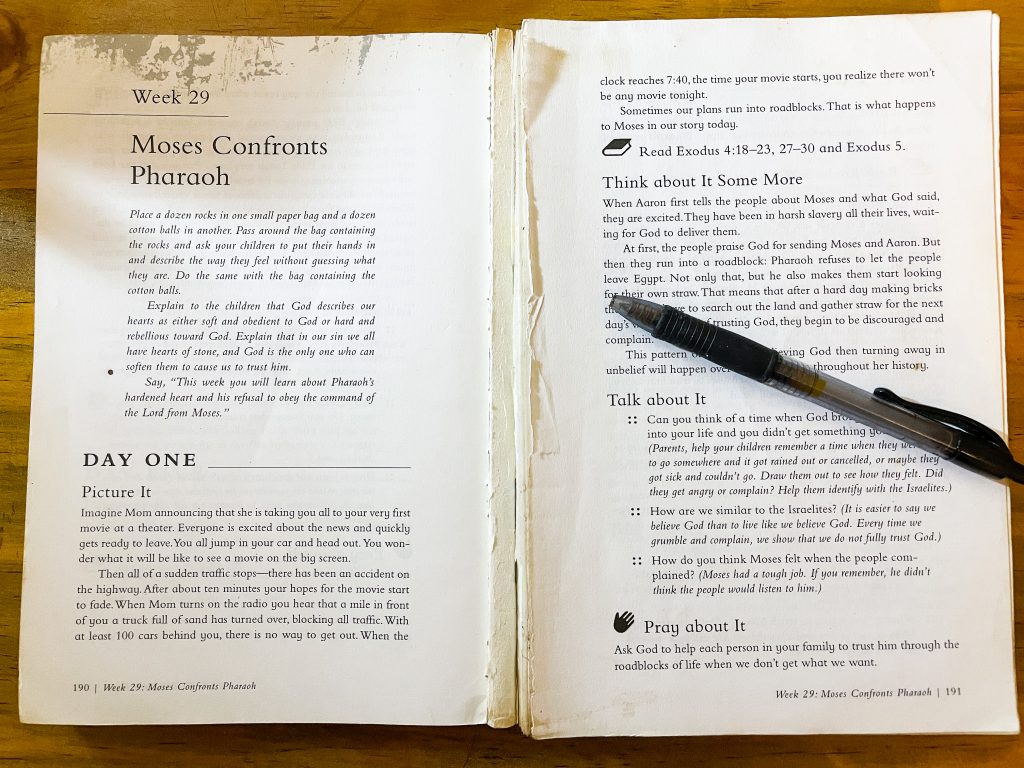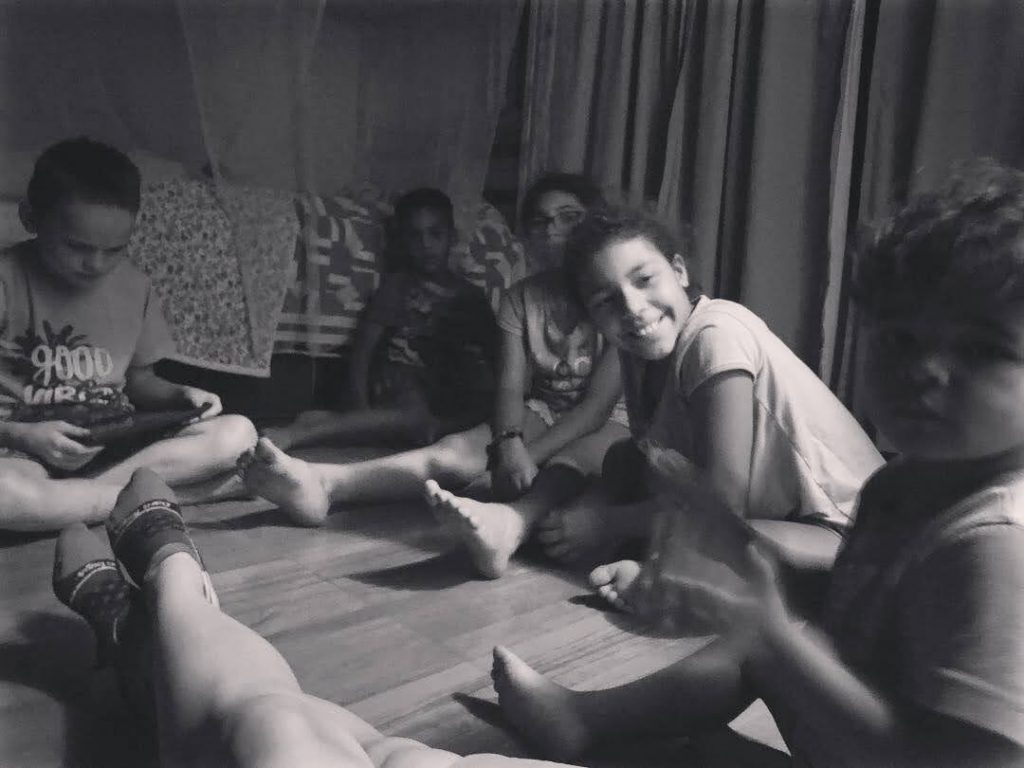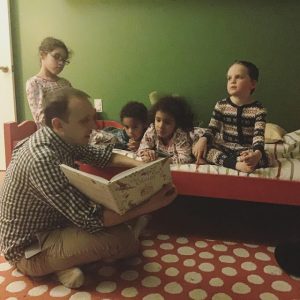One of the most exciting and challenging aspects of being a parent is leading your children to know God’s word. Parents have the duty and privilege to train our children in the fear of the Lord, and the best way to do this is little-by-little, consistently over time.
To help with this task are the books Long Story Short and Old Story New by Marty Machowski. Long Story Short covers the Old Testament and Old Story New covers the New Testament. I can’t for the life of me find our copy of Old Story New to take a picture of them together, but I promise it looks just as well-loved as this one:

Let me outline a few reasons why we love these resources and why you should check it out too:
They are simple. You don’t need an hour every night. All you need is ten minutes, five times a week. Fifty minutes a week. Furthermore, all that is needed for dad to prepare is a simple read through–at most five minutes. That makes discipling your children not feel like such an impossible undertaking. You can let the Word of God transform your children’s lives with only ten minutes a day.
They span age ranges. The author explains in the introduction how, with some tweaking, the material can target children from four to teenagers, and also how to use the material when you have a combination of ages and maturities.
They are creative. Every week begins with a creative activity or object lesson to introduce the week’s topic. Almost every day contains an illustration to help the kids understand.

They are systematic and comprehensive. The entire curriculum for both Old and New Testaments can be completed by a family in three years (although it took our family four years because we occassionally missed nights). The topics and stories are intentionally chosen to give your child a comprehensive knowledge of the Bible.
They combine teaching of stories with teaching of the Story. This is probably one of my favorite parts. It is hard to find resources that teach both the details of individual Bible stories and show how they connect to the great Narrative of Scripture–the Story of Jesus. One night of every week is spent showing how the current topic connects to Jesus. Many resources simply give Bible stories with moral lessons, but the story of David and Goliath, for example, is not about having courage in the face of adversity. It is about how God’s anointed king is empowered to destroy the enemies of God, which points us to King Jesus. In the “Introduction to Parents,” Machowski explains:
A man-centered gospel is always threatening to supplant the cross-centered gospel we read in the Bible. But if we trade Jesus, who bore our sins and received the wrath of God, for a Jesus who is merely a good example, we don’t have the same gospel. If we remove a call to repentance and replace it with an invitation to be God’s friend, we’re not passing on the treasure of the gospel in accordance with the Scriptures (p. 1).
So you can trust this resource for both Bible knowledge and Gospel-centrality.
They get children to use their Bibles. These are not Bible storybooks. Bible storybooks have their place, but this is a book to be used alongside your Bible. Children will turn to and read directly from the Bible rather than just being told about what the Bible says.
They are not based on a particular translation. When quoting from Scripture, the books use the ESV and NIV, but the questions and answers are not bound by the words of a particular translation. This leaves you free to use whatever translation your family chooses. In my opinion, it is best to use a single translation throughout a child’s life rather than using a “simpler” translation like the NIV or NLT when children are young, and then graduating children to a more literal translation like the NKJV or ESV. Gone are the days when all English speakers read, know, and quote from the same translation. However, in your home, it is good to be consistent, and thereby plant the words of Scripture firmly in the minds of your children. Children will passively memorize Scripture through repetition, just like many of us who grew up in Christian homes can almost quote verbatim passages from the KJV which we never actively tried to memorize. Therefore, I think it best to stick with one translation throughout a child’s life, and I think a literal translation is best. We use the CSB in our home, and this resource allows for that choice.

As you can see, we’re big fans. It may sound daunting to think about spending the next three or four years of your life going through just two books, but we loved it because for such a long time we didn’t have to think about what we were going to do next. Shorter devotional books are great for their purpose, but for our hectic lives and tired brains, it was great to take one more decision out of our day and just be able to reach for the same book every night for two years straight.


